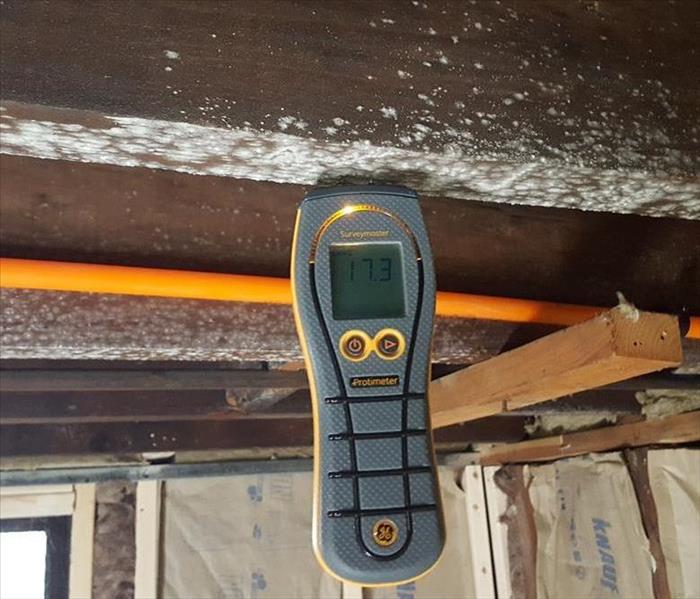Archived Mold Remediation Blog Posts
Did You Know? Water Damage can Lead to Mold Damage
1/25/2021 (Permalink)
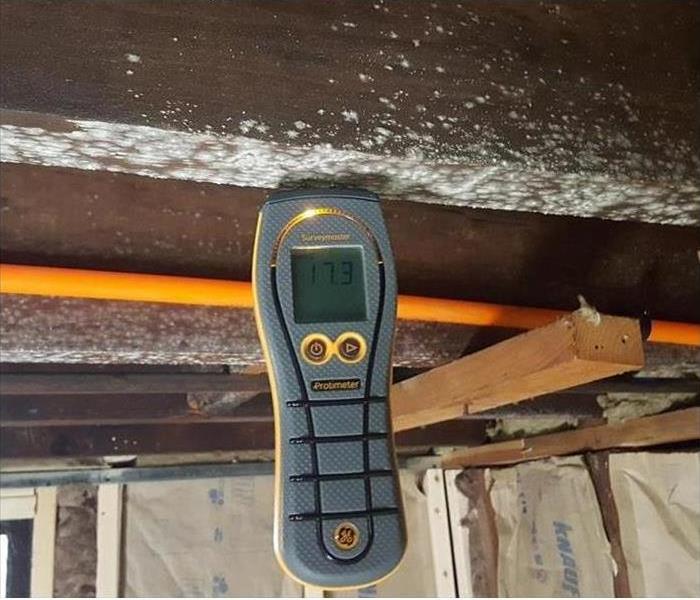 Mold Protimeter
Mold Protimeter
Water damages can often cause mold growth in your home or business; therefore, it is important to have your water damage cleaned properly and professionally. Our SERVPRO of Northwest Bergen service technicians handle water damages every day and know prompt action is required to prevent mold growth. Mold is more likely to spread when an environment has been subject to moisture for a long period of time. If your property has sustained recent water damage for example from leaking pipes, it is vital to remove excess water and dry the structure quickly. Our commercial grade equipment and DryBook monitoring system will leave no doubt that the structure is clean and dry.
If there is an ongoing moisture problem in the building, it is important to be alert for:
- Visible Mold
- Strong, musty odors
- Excessive humidity
- Any evidence of past moisture problems that might have caused undetected mold growth
These conditions may require the expertise of a qualified Indoor Quality/Environmental Professional to inspect the building for mold growth and chronic water damage problems. We can help recommend companies that provide that service.
To learn more about mold visit our mold information page.
Does Your Home or Business Have a Mold Problem?
8/28/2018 (Permalink)
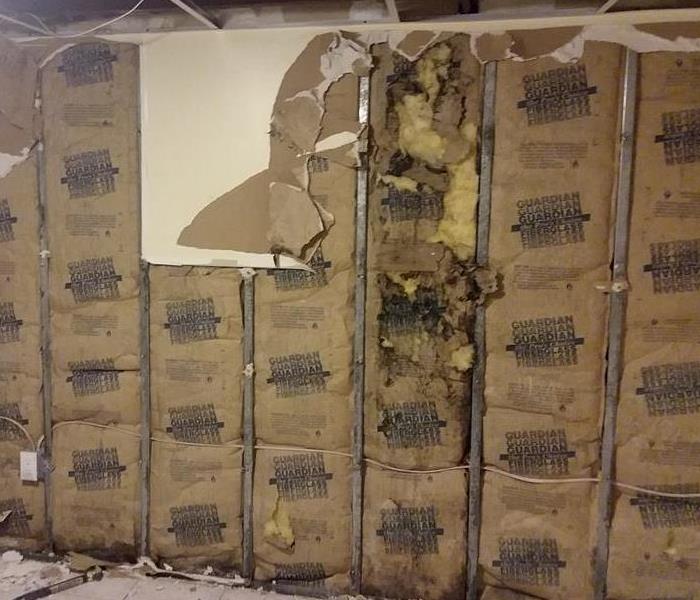 Mold Found Inside a Wall
Mold Found Inside a Wall
Microscopic mold spores naturally occur almost everywhere, both indoors and outdoors.
This makes it impossible to remove all mold from a home or business. Therefore, mold remediation reduces the mold spore count back to its natural or baseline level. SERVPRO has specialized mold removal equipment and trained technicians to get the job done right. Consider the following mold facts:
- Mold is present almost everywhere, indoors and outdoors.
- Mold spores are microscopic and float along the air and may enter your home through windows, doors, or AC/heating systems or even hitch a ride indoors on your clothing or a pet.
- Mold spores thrive on moisture. Mold spores can quickly grow into colonies when exposed to water. These colonies may produce allergens and irritants.
- Before mold remediation can begin, any source of water must be addressed. Otherwise, the mold may return.
- Mold often produces a strong, musty odor.
- Even higher-than-normal indoor humidity can support mold growth. Keep indoor humidity below 45 percent.
If your home or business has a mold problem, we can inspect and assess your porperty and use our specialized training, equipment, and expertise to remediate your mold infestation.
If You See Signs of Mold, Call Us Today - 1(800)497-7179. Read our Mold Blog to learn more about mold. Visit our Mold Web Page to learn about all our services.
Learn the Facts About Mold
8/28/2018 (Permalink)
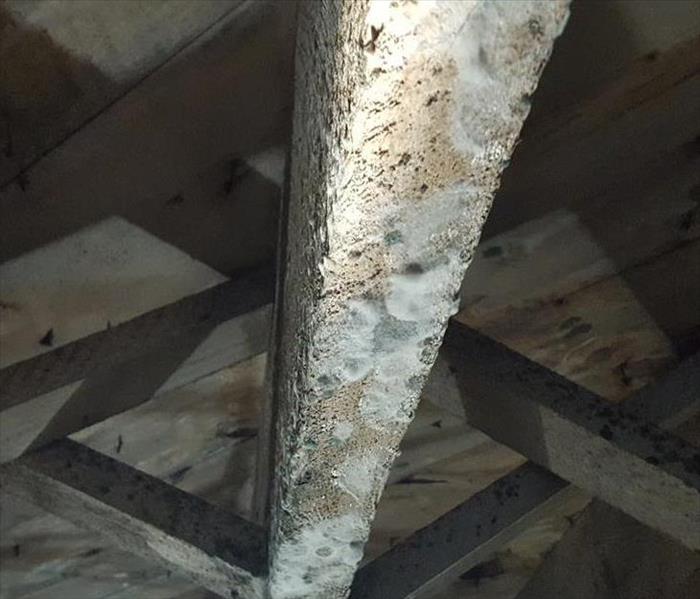 Mold Found in Basement raffers
Mold Found in Basement raffers
Confusion and misunderstanding surround the topic of mold and mold remediation. Some restoration businesses even make claims to remove all mold from a building. This is a fallacy. Mold spores occur naturally almost everywhere, both indoors and outdoors. These microscopic spores float along in the air and can enter a home or business through windows and HVAC systems. Consider these facts:
- Mold is present almost everywhere, indoors and outdoors.
- Mold spores are microscopic and float along in the air and may enter your home through windows, doors, or AC/heating systems or even hitch a ride indoors on your clothing or a pet.
- Mold spores thrive on moisture. Mold spores can quickly grow into colonies when exposed to water. These colonies may produce allergens and irritants.
- Before mold remediation can begin, any sources of water or moisture must be addressed. Otherwise, the mold may return.
- Mold often produces a strong, musty odor and can lead you to possible mold problem areas.
- Even higher-than-normal indoor humidity can support mold growth. Keep indoor humidity below 45 percent.
Mold: Don't Let It Grow
6/12/2018 (Permalink)
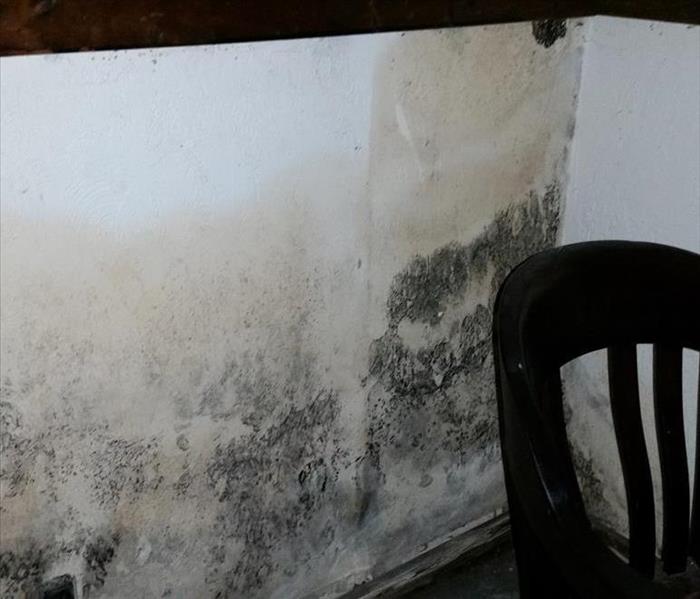 Mold Growth on Wall
Mold Growth on Wall
From the Ordinary
Fungi and mold naturally occur in our environment. In fact, over 100,000 kinds of fungi have been identified. Yeast is a type of fungi used in preparing baked goods and other food products. The unique flavor of Blue Cheese is a result of mold, and edible mushrooms are a type of fungi. Lifesaving penicillin is also a product of mold (Penicillin-chrysogenum).
Even though some forms of mold can add value to our lives, other forms of mold can be harmful. Excessive amounts of mold, different types of mold, and/or exposure to mold may present health concerns for some people.
To The Unhealthy
Water intrusion events such as storm damage, plumbing leaks or equipment failures, and poor humidity control, in your home or business can result in mold growth. When these water intrusions are not addressed quickly the resulting damage can present increased risk of harmful mold growth. Some amount of mold spores are normally present in most environments. However, if the humidity and moisture levels in a water-damaged environment are not promptly returned to normal, mold spores may grow and multiply into mold colonies. Organic materials found inside a building, such as paper, fabric, drywall, wood, and insulation, provide food sources for mold to flourish. Excessive mold growth can lead to indoor environmental conditions that pose a health threat.
Health Concerns
Health Concerns may arise with excessive mold growth indoors. These concerns will likely arise for people that are considered "at risk", which might include immune suppressed or compromised individuals, young children, the elderly, pregnant women, people with allergies or asthma. However, anyone can experience problems associated with exposure to mold. Possible health effects include: runny nose, sneezing, coughing, aggravation of asthma, sore throat or inflammation of the sinuses.
Take Precations
If there is an ongoing moisture problems in the building/home it is important to be alert for signs of mold growth:
- Presence of visible mold
- Strong musty odors
- Evidence of past moisture problems that might have caused undetected mold
- Excessive humidity
Help is Here
Sometimes a qualified Indoor Air Quality/Environmental Professional will be required to inspect and test the building for mold growth and provide reports on the type of mold present. After, the reports are done our SERVPRO Technicians can start the mold mitigation process.
Managing Mold: Tips Before Help Arrives
5/31/2018 (Permalink)
Be Careful! without proper training or tools, you could be spreading mold throughout your home.If you see visible mold, do not disturb it. You can inadvertently spread the mold infestation throughout your home. When mold is disturbed, the mold can release microscopic mold spores which become airborne and can circulate inside your home.
What To Do:
- Stay out of affected areas.
- Turn off the HVAC systems and fans
- Contact SERVPRO Bergen & Rockland County for mold remediation.
What Not To Do:
- Don't touch or disturb the mold
- Don't blow air across any surface with visible mold growth
- Don't attempt to dry the area yourself
- Don't spray bleach or other disinfectants on the mold
About our Mold Remediation Services:
SERVPRO specializes in mold cleanup and restoration, in fact, it's a cornerstone of our business. Our crews are highly trained restoration professional that use specialized equipment and techniques to properly remediate your mold problem quickly and safely.
If you see mold, call SERVPRO today!
Managing Mold: Take Pecautions
5/17/2018 (Permalink)
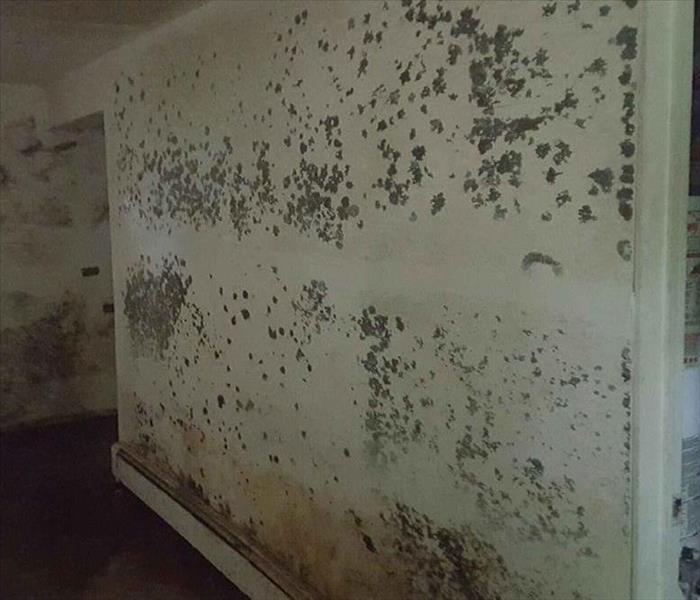 Mold Infestation
Mold Infestation
When there's a water intrusion event like a leaky roof or leaky water line, mold can quickly become a problem in you home or business. Mold can cause health issues and can also cause significant damage to your property. Our Technicians have the training,protective gear, and specialized equipment necessary to handle any size mold problems at your property. Although every mold damage scenario is different and requires a unique solution, the general mitigation process remains the same, the following is a typical mold removal process.
Call SERVPRO A representative will ask a series of questions to help determine the necessary equipment, resources and personnel needed. An independent Air Quality/Environmental Professional may be needed to do the initial mold testing.
Inspection and Damage Assessment Your property will be carefully inspected by SERVPRO for signs of mold using technology designed to detect mold and hidden water sources. Mold feeds on cellulose and water and can be hidden from plain view.
Mold Containment Various containment procedures will be placed to prevent the spread of mold and isolate the contaminated area with physical barriers and negative air pressure to keep the mold spores from spreading during the cleanup process.
Air Filtration Specialized filtration equipment captures microscopic mold spores out of the air. We have powerful air scrubbers and HEPA vacuums to prevent the spread of these mold spores while the mold remediation is in process.
Removing Mold and Mold Infested Materials The mold remediation process depends on the amount of mold growth and the type of surfaces on which the mold appears. Antifungal and antimicrobial treatments will be used to eliminate mold colonies from forming. Removing and disposing of mold infested porous materials, like drywall and flooring, may be necessary to remediate heavy mold growth.
Cleaning Contents and Belongings Restorable items such as furniture, decorative items, and curtains affected by mold can be cleaned. We use a variety of cleaning methods and techniques to clean and sanitize your belongings. Technicians are trained to remove odors with specialized fogging equipment.
Restoration Depending on the level of mold damage, drywall, subfloors, and other building materials may be removed. Restoration may involve minor repairs or major reconstruction.
Our Professional Technicians have the training and equipment to mitigate mold in your home or business.




 24/7 Emergency Service
24/7 Emergency Service



